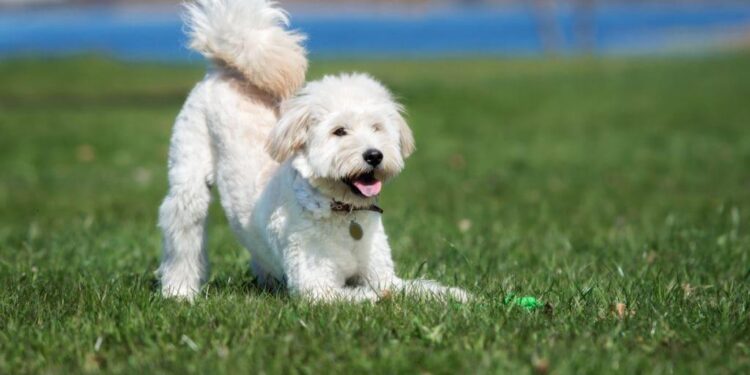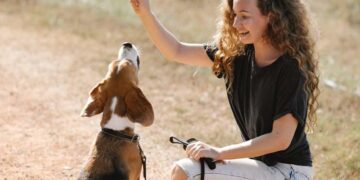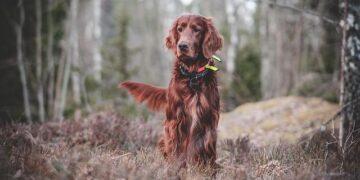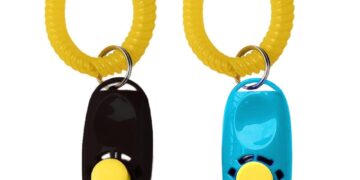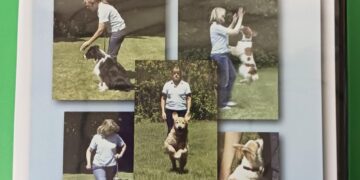Table of Contents
The leash felt impossibly heavy in my hand.
It wasn’t the physical weight of the braided nylon, but the social weight it carried.
On one end was me, a proud, slightly nervous new dog owner.
On the other was Brutus, my 12-week-old Rottweiler puppy—a bundle of clumsy paws, goofy grins, and boundless affection.
Yet, as we took our first tentative walks through the neighborhood, the leash seemed to connect us not just to each other, but to a world of fear.
I saw it in the mothers who subtly pulled their children closer, the couples who crossed the street to avoid us, the hushed whispers that followed in our wake.
In their eyes, Brutus wasn’t a puppy; he was a monster in miniature, a ticking time bomb of aggression.
I was living, in real-time, what the brilliant Nigerian author Chimamanda Ngozi Adichie calls “The Danger of a Single Story”.1
A single story, she warns, creates stereotypes.
And the problem with stereotypes is not that they are untrue, but that they are incomplete.
They make one story become the only story.3
The world had a single story about Rottweilers: they are dangerous.
This story, repeated in news headlines and movie plots, flattens the breed into a one-dimensional caricature, robbing it of its dignity and complexity.3
That first year with Brutus forced me to confront that single story head-on.
It led me down a path of frustration, failure, and ultimately, to a profound breakthrough that changed everything I thought I knew about dogs.
I came to realize that the most important question wasn’t “Are Rottweilers dangerous?” It was, “Where does the danger truly lie?” Is it inherent in the dog’s DNA, or is it located somewhere else entirely—in our incomplete stories, our flawed statistics, and our own failures as owners? This is the story of that journey.
It’s a journey to deconstruct a myth and offer a new, more complete, and ultimately more useful paradigm for understanding this magnificent breed.
Part I: Anatomy of a Myth – How the World Built a Monster
The “dangerous dog” narrative is not a static label but a dynamic, self-perpetuating feedback loop.
It begins with a frightening image, is reinforced by flawed data, and culminates in misguided policies.
This cycle churns, fueled by media sensationalism and public fear, creating the very outcomes it purports to describe.
The statistics we see are often a product of this loop, not an objective measure of the breed itself.
The Power of a Frightening Image
The Rottweiler is, in many ways, perfectly cast for the role of villain.
They are large, powerful dogs, with a substantial build, broad chest, and muscular frame that denotes great strength and endurance.5
Their striking black-and-tan coat and self-assured, aloof demeanor can be interpreted as menacing by those unfamiliar with the breed.5
This imposing appearance, combined with their storied history as guard dogs, police dogs, and military dogs, makes them an easy target for media typecasting.9
Public perception is rarely formed by direct, positive experience.
Instead, it’s shaped by this powerful image, amplified by sensationalized news stories and fictional portrayals that focus on aggression.8
This creates a “single story” that is both compelling and deeply misleading.
The result is a public primed for fear and owners who must navigate a world that is often wary and distrustful of their canine companion.7
Lies, Damned Lies, and Bite Statistics
At the heart of the “dangerous dog” myth lies a trove of frightening statistics.
Reports and data sets frequently place Rottweilers, alongside pit bull-type dogs, at or near the top of lists detailing dog bite-related fatalities (DBRFs).13
Between 2005 and 2019, for instance, one data set attributed 51 deaths in the U.S. to Rottweilers, second only to pit bulls.13
On the surface, these numbers seem to provide undeniable proof of the breed’s inherent danger.
However, a closer, more expert examination reveals that these statistics are built on a foundation of sand.
The entire premise collapses under the weight of two fundamental, unfixable flaws.
First is the problem of breed identification.
The vast majority of dog bite data relies on visual identification by victims, reporters, or animal control officers—individuals who are not canine genetic experts.
Multiple studies have shown that even experienced shelter staff are notoriously unreliable at correctly identifying breeds, especially mixed breeds, by sight alone.17
A 2013 study found that in 80% of fatal dog bite cases, the breed of the dog could not be reliably identified.17
The American Veterinary Medical Association (AVMA) highlights this as a critical issue, stating that because identification is so difficult, breed-specific data is inherently unreliable.18
Second is the problem of the missing denominator.
To calculate a true “bite rate” that would allow for comparison between breeds, one would need to know two things: the number of bites attributed to a breed and the total population of that breed in a given area.
We almost never have the second number.18
As the American Kennel Club (AKC) noted, the Rottweiler’s popularity soared in the 1990s, at one point becoming the second-most popular breed in the U.S..20
A breed with a higher population will, by sheer probability, be involved in more incidents, regardless of its temperament.
Without population data, the raw numbers are statistically meaningless for assessing risk.
It is for these reasons that the leading public health and veterinary organizations in the United States, including the Centers for Disease Control and Prevention (CDC) and the AVMA, explicitly warn against using this flawed data to create policy.18
They conclude that breed is not a reliable predictor of aggression and that dog bite risk is tied to a complex set of circumstances, including owner behavior, training, socialization, and the specific situation of the bite—not a dog’s appearance.19
The Flawed Solution: Breed-Specific Legislation (BSL)
The tragic endpoint of this flawed narrative is Breed-Specific Legislation (BSL).
Fueled by fear and buttressed by misleading statistics, over 700 U.S. cities have enacted laws that ban or place severe restrictions on the ownership of specific breeds, most commonly “pit bull types” and Rottweilers.23
Proponents argue BSL makes communities safer by regulating breeds with a supposed genetic propensity for aggression.26
However, the vast majority of expert organizations, including the AVMA, ASPCA, and even the White House under President Obama, have found BSL to be an ineffective, expensive, and discriminatory failure.23
BSL fails because it targets the wrong variable.
It focuses on breed, an unreliable and poor predictor of behavior, instead of the factors that are strongly correlated with aggression: irresponsible ownership, lack of training and socialization, and failure to spay or neuter.18
These laws punish responsible owners and well-behaved dogs, forcing families to move or surrender their beloved pets.
They are costly to enforce and create a false sense of security, diverting resources from proven solutions like strong leash laws, licensing enforcement, and dangerous dog laws that are breed-neutral and focus on the behavior of the individual dog and owner.23
Part II: The Breaking Point & The Breakthrough – My Journey to the Ecosystem
Armed with all the “standard advice” for a powerful breed, I was determined to be a responsible owner.
I read books on “being the alpha” and was told repeatedly to “show him who’s boss.” The single story of the dangerous Rottweiler demanded a narrative of dominance and control.
I believed, as many do, that to prevent a powerful dog from becoming a danger, you must conquer it.
This belief led me directly to my biggest failure as a dog owner and nearly shattered the bond with the dog I loved.
My Failure: The Story of a Broken Bond
As Brutus entered adolescence, his confidence grew, and so did his testing of boundaries.
He was a whirlwind of energy, and his herding instincts started to emerge in ways that were problematic.
One evening, he snatched a TV remote off the coffee table and trotted away with it, a classic resource-guarding behavior.
I remembered the books.
Never let him win.
You are the alpha.
Correct him firmly.
I marched over, cornered him, and pried the remote from his jaws with a harsh, guttural “NO!” The result was not the respectful submission I had been promised.
Instead, I saw a look of confusion, followed by a flicker of fear.
His body tensed, and a low growl rumbled in his chest.
In that moment, I wasn’t his trusted leader; I was an unpredictable threat.
I had followed the script for managing a “dangerous dog,” and in doing so, I had taken a step toward creating one.
The bond of trust we had built was fraying, replaced by a thread of fear.
He became more reactive on walks, more anxious in the house.
My attempts to control him were making him worse, and I felt utterly lost.
The Epiphany: The Rottweiler as an Ecosystem
My turning point came not from a dog training manual, but from the seemingly unrelated field of systems thinking.
I stumbled across a simple but profound analogy that would become my guiding principle: A car is complicated, but a rainforest is complex.28
You can understand a complicated system like a car by taking it apart.
If the radiator is broken, you can isolate and fix that single part without affecting the tires.
The car is the sum of its parts, and an expert mechanic can figure out cause and effect.29
For months, I had been treating Brutus like a car, trying to “fix” the “resource-guarding” part or the “leash-reactivity” part in isolation.
But a complex system, like a rainforest, is different.
You cannot understand a rainforest by studying a single tree.
Its health is an emergent property—a quality that arises from the countless interactions between the soil, the climate, the rainfall, the sunlight, and the thousands of species living within it.
Changing one element can have massive, unpredictable consequences for the entire system.
You don’t “fix” a rainforest; you act as a steward, nurturing the entire system so that it can find its own healthy balance.30
This was my epiphany.
A Rottweiler is not a car; it is a rainforest.
A dog’s temperament is not a simple, fixed part to be controlled.
It is an emergent property of its entire ecosystem: its genetic history (the soil), its inherent temperament (the climate), the owner’s leadership (the steward), and the vital inputs of training and socialization (the sun and rain).
You cannot fix a single behavior in isolation.
You must nurture the entire system.
This paradigm shift didn’t just give me an answer; it gave me a whole new way to see the problem and a clear path forward.
Part III: Nurturing the Ecosystem – A Steward’s Guide to the Real Rottweiler
Viewing a Rottweiler as a complex ecosystem transforms the owner’s role from one of a mechanic trying to fix a machine to that of a steward responsible for nurturing a living system.
This framework allows us to understand how each component contributes to the dog’s overall well-being and stability.
The official breed standards and mandatory practices from clubs like the American Rottweiler Club (ARC) are not just for show dogs; they are the “user manual” for this ecosystem, providing the blueprint for the ideal, stable state that responsible stewards should strive to maintain.5
The Foundation: The Soil of History & Genetics
Every ecosystem is built on a foundation of soil, and for a Rottweiler, that soil is its rich history and genetic heritage.
The breed’s origin dates back to the Roman Empire, where Mastiff-type drover dogs marched with the legions, protecting the soldiers and driving their cattle over the Alps.9
In the German town of Rottweil, these Roman dogs mixed with local breeds, creating the dog that would become known as the
Rottweiler Metzgerhund, or “Rottweil butcher’s dog”.33
Their primary job was not aggression for its own sake, but the intelligent and controlled work of driving cattle to market, guarding the herd from predators and thieves, and even pulling carts laden with meat.33
Butchers would reportedly tie their money pouches around their dogs’ necks for protection on the way home from market.20
This history selected for key traits: intelligence, endurance, a strong work ethic, a desire to control and protect property for a master, and a calm confidence.
This is the fertile soil from which the modern Rottweiler grows.
A responsible steward’s first job is to ensure this soil is as healthy as possible.
This means choosing a breeder who is a steward of the breed’s genetic health.
The American Rottweiler Club (ARC) maintains a set of “Mandatory Practices” for its member breeders, which serve as a quality-control system for the breed’s ecosystem.32
These practices require rigorous health screenings for hereditary issues like hip and elbow dysplasia, heart conditions, and eye diseases, as well as DNA testing for Juvenile Laryngeal Paralysis & Polyneuropathy (JLPP).32
They also emphasize breeding only dogs with stable temperaments.
By seeking out a breeder who religiously adheres to these standards, a potential owner is starting with the best possible foundation.
The Climate: Inherent Temperament & Intelligence
The inherent climate of the Rottweiler ecosystem is defined by its official temperament and its remarkable intelligence.
The “single story” paints a picture of aggression, but the breed standards from the world’s top kennel clubs describe a very different dog.
The AKC standard calls for a “calm, confident and courageous dog with a self-assured aloofness that does not lend itself to immediate and indiscriminate friendships”.5
It describes a dog that responds to its environment with a “wait-and-see attitude”.5
The Kennel Club (UK) standard specifies a temperament that is “good natured, not nervous, aggressive or vicious; courageous, biddable, with natural guarding instincts”.37
They are not hyper-social golden retrievers; their aloofness with strangers is a feature, not a bug.
But with their families, they are described as deeply loyal, affectionate, and even “lovey-dovey” or “goofy”.38
The other defining feature of the Rottweiler’s climate is its brilliant mind.
In his seminal work, The Intelligence of Dogs, Stanley Coren ranked the Rottweiler as the 9th most intelligent dog breed.40
This places them in the top tier of canine intelligence, capable of learning new commands in fewer than five repetitions and obeying a known command on the first try 95% of the time or better.40
This high intelligence is a powerful force within the ecosystem.
When channeled correctly, it makes them exceptionally trainable and capable of excelling in dog sports like obedience, tracking, and agility.21
However, if this powerful mind is not given a job to do, it can lead to boredom, which is a primary driver of destructive behaviors like chewing and digging.39
A bored Rottweiler is an unhappy and potentially problematic Rottweiler.
The Steward: The Unwavering Role of the Owner
In any ecosystem, the steward is the most critical variable, and this is profoundly true for the Rottweiler.
This is not a breed for everyone, and experts widely agree that they are not a good choice for inexperienced or first-time dog owners.7
Owning a Rottweiler is a significant commitment of time, energy, and finances.48
The steward’s primary role is to provide leadership.
This is where many owners, myself included, go wrong.
The myth of the “dangerous dog” leads to the flawed conclusion that one must “dominate” the dog.
But true leadership for a Rottweiler is not about physical force or being a bully; it’s about being a calm, confident, and utterly consistent guide.50
The dog needs to see its owner as a reliable source of safety and direction.
When the owner provides this, the dog is relieved of the burden of having to make its own protective decisions, which reduces stress and the likelihood of fear-based reactivity.
A Rottweiler without a strong leader will attempt to fill the role itself, and that is a recipe for conflict.52
The Essential Inputs: Sun, Water, and Nutrients
A healthy ecosystem requires the right inputs.
For a Rottweiler, these are consistent training, broad socialization, and daily enrichment.
Training (The Water): This is the life-giving input that helps the dog understand its world.
Given their intelligence and eagerness to please, Rottweilers respond exceptionally well to positive reinforcement training methods.43
This approach uses rewards like treats, praise, and play to encourage desired behaviors, building a cooperative partnership rather than an adversarial relationship.
Conversely, common training mistakes can “poison the water.” Using anger and frustration, delivering untimely corrections, or being inconsistent with commands only creates fear and confusion in an intelligent dog that is trying to understand the rules.52
Socialization (The Sunlight): This is perhaps the single most critical input for a stable temperament.
Canine behavior experts have identified a crucial socialization window in puppies, roughly from 3 to 14 weeks of age.57
During this period, a puppy’s brain is uniquely receptive to new experiences.
Positive, non-fearful exposure to a wide variety of people (of all ages and appearances), places, sounds, and other animals is essential to “vaccinate” the puppy against future fearfulness and aggression.58
For a naturally protective breed like the Rottweiler, this process is not optional; it is a fundamental requirement of responsible ownership.
Socialization must be a safe, positive, and lifelong process to maintain a well-adjusted adult dog.58
Enrichment (The Nutrients): This addresses the Rottweiler’s intelligent mind and working heritage.
They need a “job” to feel fulfilled.38
This doesn’t mean they need to herd cattle, but they do need daily mental stimulation.
This can be provided through dog sports, obedience work, scent work, or even just structured play and puzzle toys at home.43
This enrichment is the nutrient that feeds their mind, preventing the boredom that can lead to destructive behavior and ensuring the entire ecosystem remains in a healthy, balanced state.
Part IV: The Result – A Thriving, Balanced Ecosystem
When a steward diligently nurtures their Rottweiler’s ecosystem, the result is not the monster of public imagination, but the gentle, confident, and trustworthy companion described in the breed standard.
The question “Are Rottweilers good with kids?” is itself a flawed, single-story question.
It treats the dog as a static object with a fixed property.
A systems-thinking approach reframes the question: “Is this specific Rottweiler, with its unique genetic background, training, and socialization, a good fit for these specific children, who have been taught how to interact safely and respectfully with a large dog?” The interaction is a dynamic, two-way street.
The Gentle Guardian: The Rottweiler in the Family
My journey with Brutus, which began with fear and frustration, ended in success.
By shifting my perspective from a mechanic to a steward, I was able to rebuild our bond.
Positive training, consistent leadership, and a commitment to meeting his needs for exercise and enrichment transformed him.
He became the dog he was always meant to be: a calm, self-assured, and profoundly loyal member of our family.
My story is not unique.
Countless owners and rescue organizations share stories of these dogs thriving as gentle giants, service animals, and beloved family members, often displaying a surprisingly goofy and playful side.18
A responsible approach to having a Rottweiler in a family with children requires active management, not passive hope.
Constant supervision is non-negotiable.46
Their large size means they can easily knock over a small child by accident, even in play.63
Their natural herding instinct may cause them to “nudge” or chase running children, which must be managed and redirected.38
Their protective nature can also be misdirected if they perceive children’s roughhousing as a real threat.63
Furthermore, their high prey drive means caution is always warranted around smaller pets like cats.64
Safety is not a default state; it is an outcome created by a vigilant steward who teaches both the dog and the children the rules of respectful interaction.
The Two Ecosystems: A Tale of Two Rottweilers
The following table summarizes the central thesis of this report.
It illustrates how the same genetic raw material can produce two drastically different outcomes based entirely on the stewardship provided by the owner.
It shifts the focus from an immutable trait (“dangerous”) to a variable outcome dependent on human action.
| Ecosystem Factor | The Neglected Ecosystem (The “Dangerous” Dog) | The Nurtured Ecosystem (The “Gentle Giant”) |
| Owner/Steward | Inconsistent, fearful, or seeks a “macho” status symbol. | Calm, confident, consistent leader. Understands the breed’s needs and the commitment required. |
| Socialization | Isolated during the critical puppy window. Limited, negative, or no exposure to new things. | Early, broad, and continuous positive exposure to various people, places, and animals. |
| Training | Inconsistent or nonexistent. Based on punishment, dominance, and fear. | Consistent and lifelong. Based on positive reinforcement and building a partnership. |
| Enrichment | Has no “job.” Is bored, under-stimulated, and frustrated. | Has a “job” (e.g., dog sports, puzzle toys, structured play). Is mentally tired and fulfilled. |
| Resulting Behavior | Fear-based reactivity, territorial aggression, anxiety, destructive habits. A liability. | Calm confidence, appropriate aloofness with strangers, deep loyalty, and trustworthiness. An asset. |
Conclusion: Rewriting the Story, One Leash at a Time
Today, when I walk my Rottweiler, the leash feels light.
My own confidence, born from understanding his ecosystem, projects a calm that people can sense.
My dog, secure in his leadership and well-socialized, moves with a quiet self-assurance.
The fearful glances are fewer, replaced more often by curious or admiring ones.
The weight on the leash, both real and imagined, is gone.
So, are Rottweilers dangerous? The answer is a definitive No. Rottweilers are not inherently dangerous; they are inherently capable.
They are capable of immense strength, top-tier intelligence, and a profound loyalty that has bonded them to humans for centuries.
The danger lies not in the dog, but in the ignorance perpetuated by the single story—a story that creates fear, promotes irresponsible ownership, and ultimately fails the very animals it purports to describe.
The danger lies with the steward who acquires a complex ecosystem and treats it like a simple machine, neglecting its needs and then blaming it for the inevitable system failure.
The responsibility is immense, but the reward is immeasurable.
As Chimamanda Adichie concludes, when we reject the single story, when we realize that there is never just one story about any person or any place—or any dog—we regain a kind of paradise.2
It is a paradise where we can repair a broken dignity and see these magnificent animals not for the monster of our fears, but for the loyal, intelligent, and capable companions they truly are.
It is our duty, as owners and as a society, to stop telling the wrong story and start becoming the stewards this incredible breed deserves.
Works cited
- The Danger of the Single Story – Chimamanda Ngozi Adichie – The Dewdrop, accessed August 3, 2025, https://thedewdrop.org/2020/06/19/danger-of-the-single-story-chimamanda-ngozi-adichie/
- “The Danger of a Single Story” by Chimamanda Ngozi Adichie speech – James Clear, accessed August 3, 2025, https://jamesclear.com/great-speeches/the-danger-of-a-single-story-by-chimamanda-ngozi-adichie
- Reading: The Danger of a Single Story (Abridged) | Facing History & Ourselves, accessed August 3, 2025, https://www.facinghistory.org/resource-library/reading-danger-single-story-abridged
- Chimamanda Adichie: The Danger of a Single Story – Farnam Street, accessed August 3, 2025, https://fs.blog/chimamanda-adichie-the-danger-of-a-single-story/
- Official Standard of the Rottweiler General Appearance: The ideal Rottweiler is a medium large, robust and powerful dog, black w, accessed August 3, 2025, https://images.akc.org/pdf/breeds/standards/Rottweiler.pdf
- Breed Standard – American Rottweiler Club, accessed August 3, 2025, https://www.amrottclub.org/about-the-rottweiler/breed-standard/
- 10 Things to Know About Rottweilers Before Buying | Pets4Homes, accessed August 3, 2025, https://www.pets4homes.co.uk/pet-advice/ten-things-you-need-to-know-about-the-rottweiler-before-you-buy-one.html
- What are some reasons for the negative perception of Rottweilers? Are there any characteristics that make them more likely to be considered ‘bad dogs’ compared to other breeds, regardless of their owners? – Quora, accessed August 3, 2025, https://www.quora.com/What-are-some-reasons-for-the-negative-perception-of-Rottweilers-Are-there-any-characteristics-that-make-them-more-likely-to-be-considered-bad-dogs-compared-to-other-breeds-regardless-of-their-owners
- History – KUSA, accessed August 3, 2025, https://www.kusa.co.za/rottweiler/breed/history.html
- Rottweiler History, accessed August 3, 2025, https://www.shadowmakerrottweilers.com.au/rottweiler-history
- Your Guide To Rottweilers | FOTP, accessed August 3, 2025, https://fotp.com/learn/dog-lifestyle/your-guide-to-rottweilers
- Challenging Rottweiler Myths: Meet Koda! – Lemon8 app, accessed August 3, 2025, https://www.lemon8-app.com/jamiehansenn/7231797374115578373?region=us
- Quick Statistics – U.S. Dog Bite Statistics – DogsBite.org, accessed August 3, 2025, https://www.dogsbite.org/dog-bite-statistics-quick-statistics.php
- Dog Attacks by Breed 2024 – Dog Bite Statistics & State Fatality Data, accessed August 3, 2025, https://www.xcaliburchiropracticpc.com/dog-attacks-by-breed-2024-dog-bite-statistics-state-fatality-data
- Dog Bite Statistics by Breed 2021 | Maho Prentice, LLP, accessed August 3, 2025, https://maho-prentice.com/blog/dog-bite-statistics-by-breed-2021/
- Dog Bite Statistics by Breed | Adam S. Kutner, Injury Attorneys, accessed August 3, 2025, https://www.askadamskutner.com/dog-bites/bite-statistics-according-to-dog-breed/
- Statistics, Pit Bull Bites & Community Safety – Love-A-Bull, accessed August 3, 2025, https://love-a-bull.org/resources/statistics-pit-bull-bites-community-safety/
- Why breed-specific legislation is not the answer | American …, accessed August 3, 2025, https://www.avma.org/resources-tools/pet-owners/dog-bite-prevention/why-breed-specific-legislation-not-answer
- The Role of Breed in Dog Bite Risk and Prevention – American Veterinary Medical Association, accessed August 3, 2025, https://www.avma.org/sites/default/files/resources/Welfare-Implications-of-the-role-of-breed.pdf
- History of the Rottweiler – Rottie Squad Kennel, accessed August 3, 2025, https://www.rottiesquad.com/history/
- Rottweiler History: Where the Breed Originated – American Kennel Club, accessed August 3, 2025, https://www.akc.org/expert-advice/dog-breeds/rottweiler-history/
- Fatal Dog Attacks in the U.S. — Breeds, Statistics, & Studies, accessed August 3, 2025, https://www.fataldogattacks.org/
- What Is Breed-Specific Legislation (BSL)? – ASPCA, accessed August 3, 2025, https://www.aspca.org/improving-laws-animals/public-policy/what-breed-specific-legislation
- State & Local Dog Bite Prevention/Breed-Specific Proposals, accessed August 3, 2025, https://www.avma.org/advocacy/state-local-issues/state-local-dog-bite-preventionbreed-specific-proposals
- Detailed Discussion of Breed Specific Legislation | Animal Legal & Historical Center, accessed August 3, 2025, https://www.animallaw.info/article/detailed-discussion-breed-specific-legislation
- Pit Bull Bans | Pros, Cons, Debate, Arguments, Bully Breeds, Dog Bites, & Dogfighting, accessed August 3, 2025, https://www.britannica.com/procon/pit-bull-bans-debate
- Position Statements/Media – Ontario Coalition Against BSL, accessed August 3, 2025, https://ontariocoalitionagainstbsl.com/position-statements%2Fmedia
- Complicated Is Not Complex!. A common misconception of anything not… | by Unbroken Badger | Medium, accessed August 3, 2025, https://medium.com/@Unbroken.badger/complicated-is-not-complex-d14d495ac4e0
- Complexity Science: An Introduction with Examples and Resources – Taylor Pearson, accessed August 3, 2025, https://taylorpearson.me/complexity-science/
- Three Myths in Complexity Science – and How to Resolve Them – arXiv, accessed August 3, 2025, https://arxiv.org/html/2407.01762v3
- What are Complex Systems? – Understanding and Assessing Complex Phenomena – Blog des Fraunhofer IESE, accessed August 3, 2025, https://www.iese.fraunhofer.de/blog/complex-systems/
- Mandatory Practices – American Rottweiler Club, accessed August 3, 2025, https://www.amrottclub.org/wp-content/uploads/2019/10/Mandatory-Practices-eff-2019-10-15.pdf
- Rottweiler – Wikipedia, accessed August 3, 2025, https://en.wikipedia.org/wiki/Rottweiler
- What Were Rottweilers Bred For? History & Origin Explained – Dogster, accessed August 3, 2025, https://www.dogster.com/lifestyle/what-were-rottweilers-bred-for
- American Rottweiler Club – AKC National Rottweiler Breed Club, accessed August 3, 2025, https://www.amrottclub.org/
- Judges Education Materials – American Rottweiler Club, accessed August 3, 2025, https://www.amrottclub.org/wp-content/uploads/2020/04/JE-Combined-Materials.pdf
- Rottweiler | Breed Standards – The Kennel Club, accessed August 3, 2025, https://www.thekennelclub.org.uk/breed-standards/working/rottweiler/
- Rottweiler (Rottie): Dog Breed Characteristics & Care – The Spruce Pets, accessed August 3, 2025, https://www.thesprucepets.com/breed-profile-rottweiler-1117993
- The Rottweiler Breed Guide: Personality, History, Training, Food, and More – The Farmer’s Dog – Digest, accessed August 3, 2025, https://www.thefarmersdog.com/digest/the-rottweiler-breed-guide-personality-history-training-food-and-more/
- Are Rottweilers Smart? Canine Intelligence Explained – Dogster, accessed August 3, 2025, https://www.dogster.com/lifestyle/are-rottweilers-smart
- Rottweiler Temperament: A Dog Owners’ Guide – PetScreening, accessed August 3, 2025, https://www.petscreening.com/blog/rottweiler-temperament-a-dog-owners-guide
- Is the Rottweiler the Right Breed for Your Lifestyle? – American Kennel Club, accessed August 3, 2025, https://www.akc.org/expert-advice/dog-breeds/rottweiler-right-for-you/
- Understanding Rottweiler Behavior: Key Traits & Training Tips – Cape Cod Dog Center, accessed August 3, 2025, https://capecoddogcenter.com/understanding-rottweiler-behavior-what-every-owner-should-know/
- Why Many First-Time Rottweiler Owners FAIL! – YouTube, accessed August 3, 2025, https://www.youtube.com/watch?v=pc49lw2f_pk
- Rottweiler Temperament & Care | Dutch, accessed August 3, 2025, https://www.dutch.com/blogs/dogs/rottweiler-temperament
- Dog Advice for Rottweiler – Petplan, accessed August 3, 2025, https://www.petplan.co.uk/dog-insurance/dog-breeds/rottweiler.html
- Why First-Time Dog Owners Should Think Twice Before Getting a Rottweiler – Dogpoint LLC, accessed August 3, 2025, https://www.dogpoint.pet/blog/rottweilers-are-not-for-first-time-dog-owners
- Owning a Rottweiler: The Good, The Bad, The Ugly – YouTube, accessed August 3, 2025, https://www.youtube.com/watch?v=qF-hrsTRzz8
- Owning a Rottweiler: What You Should Know – PetHelpful, accessed August 3, 2025, https://pethelpful.com/dogs/owning-a-rottweiler-what-you-should-know
- Responsible Ownership of Powerful Dog Breeds: Understanding Safety Measures | TikTok, accessed August 3, 2025, https://www.tiktok.com/@thinkingcanine/video/7330029099437624618
- Powerful dogs need responsible owners. : r/BiologiaBrasil – Reddit, accessed August 3, 2025, https://www.reddit.com/r/BiologiaBrasil/comments/1k6jf7p/c%C3%A3es_potentes_precisam_de_donos_conscientes/?tl=en
- 6 Mistakes Every Rottweiler Owner Makes… – YouTube, accessed August 3, 2025, https://www.youtube.com/watch?v=ZRSmDkUS6Es
- Rottweiler as a First Dog: Pros, Cons, and What to Watch Out For? – Reddit, accessed August 3, 2025, https://www.reddit.com/r/Rottweiler/comments/1f9t4ha/rottweiler_as_a_first_dog_pros_cons_and_what_to/
- www.ctodogtraining.com, accessed August 3, 2025, https://www.ctodogtraining.com/unleashing-the-guardian-training-a-rottweiler-with-confidence-and-care/#:~:text=Positive%20reinforcement%20is%20a%20highly,instead%20of%20punishing%20your%20Rottweiler.
- Rottweiler Training | How To Train & Socialize Them – US Service Animals, accessed August 3, 2025, https://usserviceanimals.org/blog/rottweiler-training/
- Most Common Mistakes In Rottweiler Training | RottweilerHQ.com, accessed August 3, 2025, https://www.rottweilerhq.com/most-common-training-mistakes/
- Puppy parties and beyond: the role of early age socialization practices on adult dog behavior – PMC, accessed August 3, 2025, https://pmc.ncbi.nlm.nih.gov/articles/PMC6067676/
- Socialization of puppies and kittens – American Veterinary Medical Association, accessed August 3, 2025, https://www.avma.org/sites/default/files/2024-09/avma-lit-review-socialization-puppies-kittens-0924.pdf
- Socialization & Early Exposure – Canine Welfare Science – Purdue University, accessed August 3, 2025, https://caninewelfare.centers.purdue.edu/behavior/socialization/
- WORST Mistakes I Made Raising my First Rottweiler – YouTube, accessed August 3, 2025, https://www.youtube.com/watch?v=KHEgFWfD9kU
- Success Stories – Rottweiler Rescue of Los Angeles, accessed August 3, 2025, https://www.rottrescuela.org/success-stories.html
- What I Learned from 10 Rottweiler Owners Will Change Your Mind – YouTube, accessed August 3, 2025, https://www.youtube.com/watch?v=zMoJ-4_Dul0
- Are Rottweilers Good With Kids? Reputation vs. Reality – Native Pet, accessed August 3, 2025, https://nativepet.com/blogs/health/are-rottweilers-good-with-kids
- Thinking of Getting a Rottweiler? A Guide to the Breed, accessed August 3, 2025, https://www.agriapet.co.uk/guides-and-advice/rottweiler-breed-care-exercise-training/
- www.agriapet.co.uk, accessed August 3, 2025, https://www.agriapet.co.uk/guides-and-advice/rottweiler-breed-care-exercise-training/#:~:text=Rottweilers%20do%20have%20a%20high,to%20their%20strong%20chase%20instincts.
- Chimamanda Ngozi Adichie: The danger of a single story | TED – YouTube, accessed August 3, 2025, https://www.youtube.com/watch?v=D9Ihs241zeg
